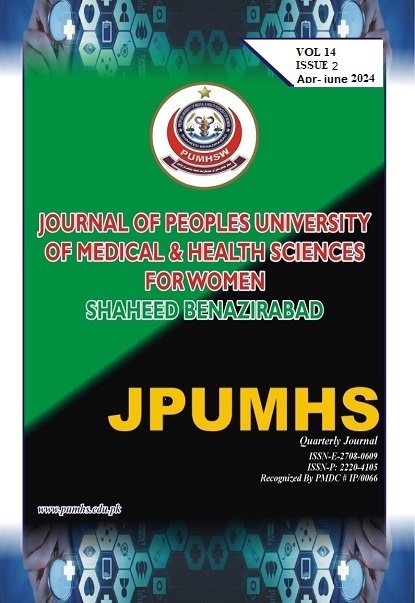EATING PATTERN AND ABO BLOOD GROUP: A RIGOROUS EXAMINATION BY SCOFF QUESTIONNAIRE IN THE FEMALE RESIDENTS OF HYDERABAD, PAKISTAN.
http://doi.org/10.46536/jpumhs/2024/14.02.511
Keywords:
Blood typing, Rh blood, Prevalence, Menopause.Abstract
BACKGROUND: The significance of determining the frequency of blood typing in various diseases and eating
habits grew after Landsteiner's 1901 discovery of human genetic differences in blood typing. OBJECTIVES:
The aim of the study is thus to find out any relationship between different blood groups and eating disorder.
METHODOLOGY: The significance of determining the frequency of blood typing in various diseases and
eating habits grew after Landsteiner's 1901 discovery of human genetic differences in blood typing. RESULTS:
The eating disorders were recognized by Scoff’s questionnaire. The statistical analysis was done on Graph Pad
Prism9.the statistics and contingency options were explored to obtain P value. When normal menstruating women
were compared to menopausal women, the prevalence of blood groups was 23% and 20% for A blood typing,
19.9% and 18.8% for B blood typing, 3.3% and 6.1% for AB Blood typing, and 13.8% and 14.3% for blood type
O. Rh positive in typical female was 46.4% and 49.2% in menopausal ladies while Predominance of Rh negative
was 3.3% and 1.1%. The study demonstrates the likelihood of an association between the aforementioned groups
and the prevalence of blood typing.
Downloads
Downloads
Published
How to Cite
Issue
Section
License

This work is licensed under a Creative Commons Attribution-NoDerivatives 4.0 International License.




